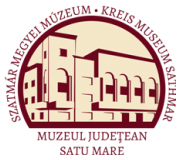Szőcs Péter Levente (szerk.): Arhitectura ecleziastică din Satu Mare (Satu Mare, 2008)
Vetiş - Vetés
eaşi perioadă cu biserica. In anii 1790 edificiul a fost renovat de mai multe ori. Turnul a primit forma actuală la sfârşitul secolului al XIX-lea - începutul secolului XX. Are două clopote, realizate în 1905, respectiv 1935. (TSz). Vetés. Református templom A középkori templom Szt. Miklósnak volt szentelve, az itteni pap a 14. században pápai tizedet fizetett. A jelenlegi gótikus épület egyhajós, szentélye a nyolcszög három oldalával záródik. Kívülről támpillérek erősítik, a szentély bordás keresztboltozattal ellátott. Szirmay szerint 1460-ban építtette az itteni birtokos családból származó Vetési Albert, veszprémi püspök. A templom a 19. század második felében nem volt vakolva, ekkor figyelték meg, hogy szépen faragott kváderkövekből épült, azt is följegyezték, hogy ekkor a toronynak még épített, homorú oldalú, nyolcszögalapú gúla sisakja, és késő-reneszánsz pártázata volt. A torony egyébként együtt épülhetett a hajóval, erről tanúskodott egykori bélletes nyugati kapuja is. A templom ablakait később átalakították. Az 1790-es években többször megújították az egész épületet, a torony jelenlegi formáját a 19. század végén, vagy a 20. század elején nyerte el. Egyik harangját 1905-ben, a másikat 1935-ben öntötték. (TSz). Vetiş. The Calvinist Church The medieval church was dedicated to St Nicholas. The priest of the village was mentioned in the register of papal tithes in the 14th century. The present church has one nave, the vaulted sanctuary is polygonal, and holds on strong buttresses on the outside. According to Szirmay, the church was built in 1460 by Albert Vetési, bishop of Veszprém, descendent of the local noble family. The edifice was not plastered during the second part of the 19th century. The descriptions of this period mention the church to be built of profiled stone; the upper part of the tower had the shape of a pyramid with octagonal base and convex sides, while on the upper part it had a moulding in late renaissance style. The shape of the western gate indicates that the tower was built at the same time with the church. The edifice was renovated several times in the 1790’s. The present shape of the tower was achieved at the end of the 19th century and the beginning of the 20th century. The tower is fit with two bells, made in 1905, respectively in 1935. (TSz). 156
